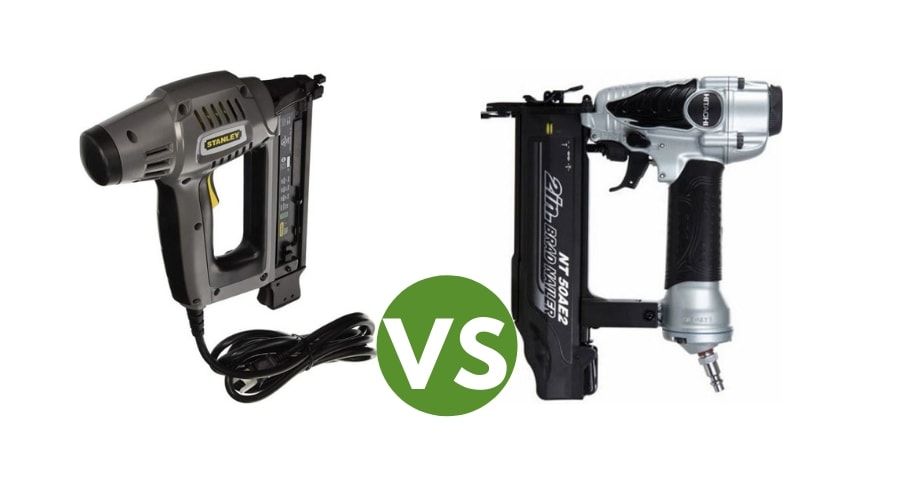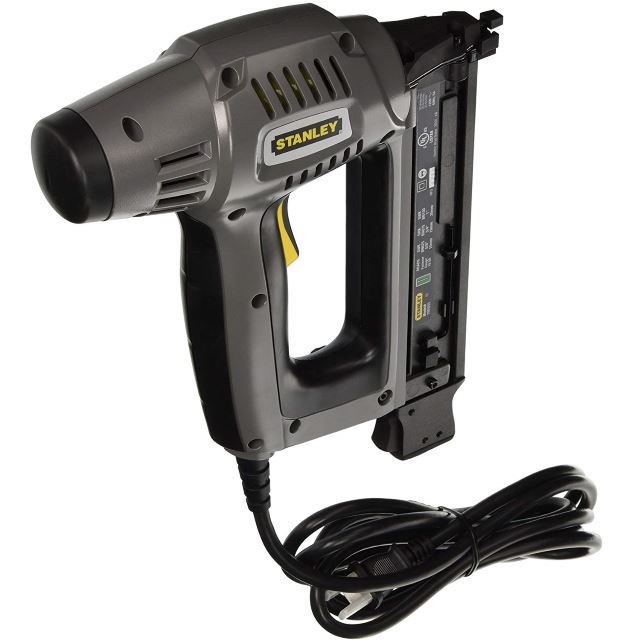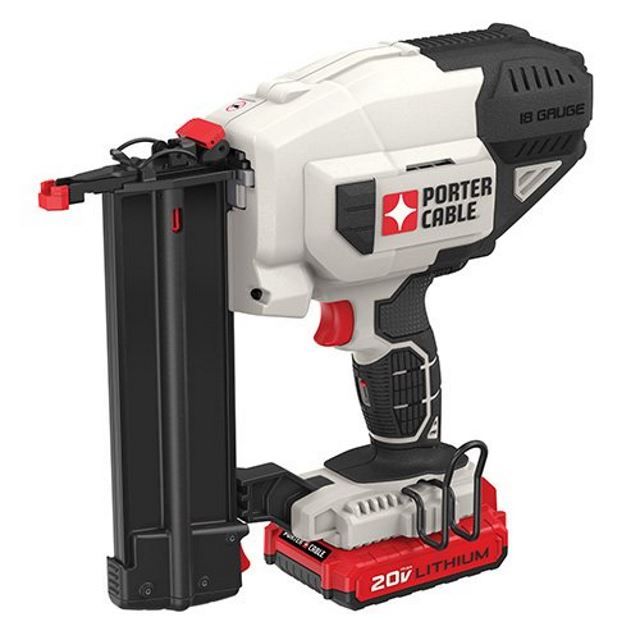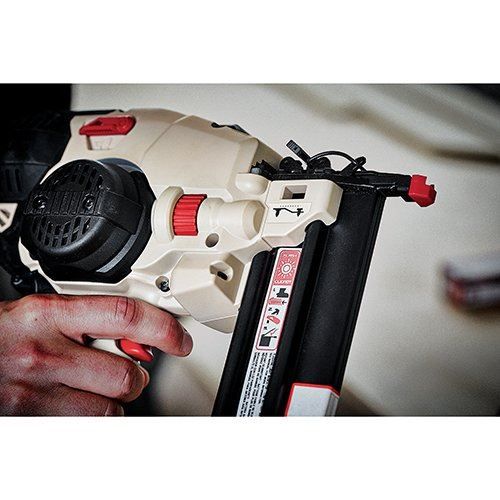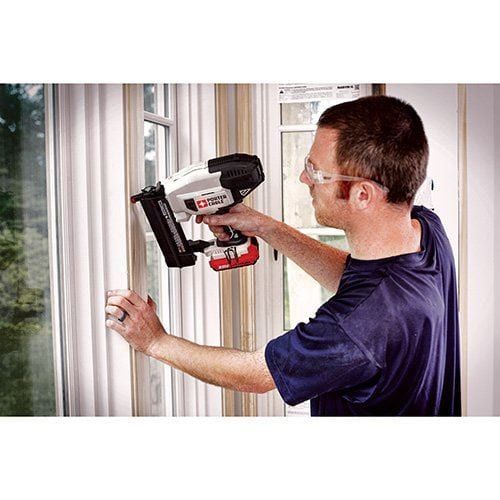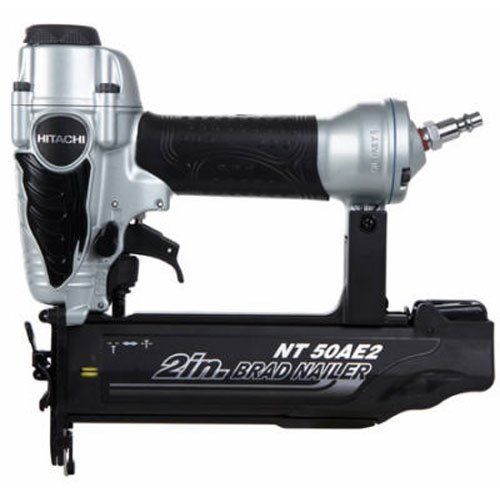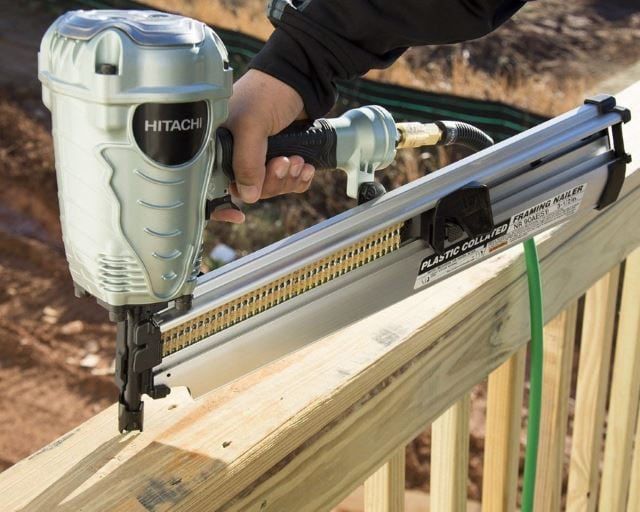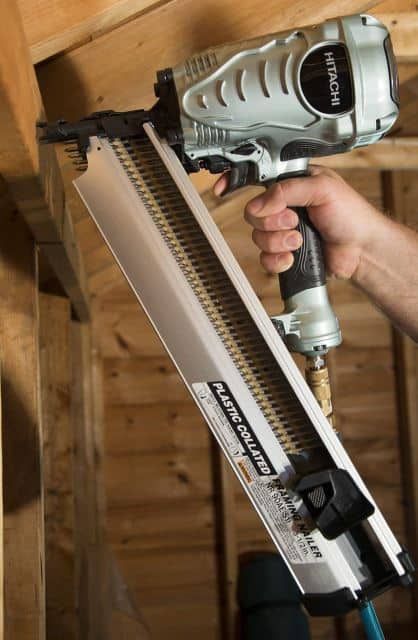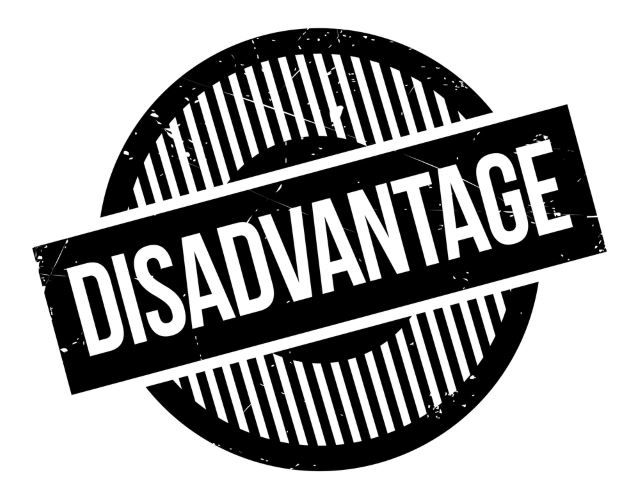If you have narrowed down some nail gun choices for purchase but are still unsure of which make and model to stick with, you might want to consider their power source to help top one or another in your favor. There are many features and benefits to thinking over pertaining to the different types of guns you are presented with, but power sources are often a make or break in relation to the strength you need in relation to the job, as well as what you are comfortable with.
The differences between a nail gun, electric vs pneumatic, are in quite a contrast to one another. Below I’m going to explain some of the details you should think about before committing to this type of investment.
Electric Nailers
Whether powered by an electrical outlet, or more commonly, a lithium-ion battery- electric nailers are widely available for all purposes.
Pros
- Often more portable
- Wide variety of options
- Easy to maintain and store
Cons
- Limited by cord or battery length
- May not be as strong as other options
Pneumatic Nailers
Pneumatic nailers are powerful choices that are often preferred by professionals, and come in a wide variety of makes and models.
Pros
- Powerful driving forces
- Available in a wide variety of makes and models
- Often preferred by professionals
Cons
- Limited by air hose
- May be more power than needed for certain jobs
What is an Electric Nailer?
Corded Nail Gun
Cordless Nail Gun
Electric nailers are available in two different types of models. Corded electric nail guns are not as widely available anymore due to advances in technology that allow for powerful cordless options that most people prefer. A corded nailer attaches to your electrical outlet via an extension cord. A cordless electric is powered by a rechargeable, lithium ion battery. These are very portable, and generally have a very acceptable run time before needing to be recharged.
How They Work
Electric nailers are powered by spring loaded and electromagnetic designs. A spring-loaded nailer has two rotating drive axles powered by the motor. One axle moves a grooved disk while the other moves a gear train. A cam is turned by this process that puts pressure on a lever when you pull the nailer trigger. This pushes against a hammer that compresses two springs. As the axle turns this releases and fires the nail.
Electromagnetic designs depend on an electric current that that creates a magnetic field around a wire, called a solenoid. This contains a sliding hammer, called a piston, and when the magnetic force is implemented, the piston is driven against a blade which fires the nail.
Benefits of Electric Power
Electric powered nailers are easy to maintain and use, and cordless electric versions have been growing in popularity as more and more power becomes available through advances in technology. Lithium-ion batteries hold more charge than ever for long work times and have become smaller in size and lighter in weight for increased portability.
You also are not limited to only one battery. Additional extra batteries are almost always available for optional purchase in order to have a backup on hand to keep you from working without pause.
Drawbacks of Electric Power
If using a corded gun you are limited by outlet placement as well as cord length. Cordless guns are limited by battery strength and life. Electrically powered gun often are unable to provide the same amount of pressure as a pneumatic nailer, making them not as popular for heavy-duty jobs such as framing and roofing. Although some models exist that are capable of handling the job, they are not as readily available as comparable models powered by air pressure.
What is a Pneumatic Nailer?
Pneumatic nail guns were the first type of models to debut as a construction aide to help in building projects. They changed the construction job site, making it more efficient in both time and money. Over the years these nailers have taken on many different roles, and are more lightweight and portable than ever before. Despite being dependent upon an air compressor for power, they can be found throughout most job sites, and many home projects.
How They Work
A pneumatic nailer uses air pressure to drive the nail. They are connected to a charged air compressor via an air hose. These are very powerful due to the amount of pressure that builds within the guns prior to firing. These also have a solenoid design that has a piston that can slide down to fire the nail when the trigger is pulled. This is due to the pressure behind the piston that releases. After the trigger has been released, pressure builds back up to reset the piston and ready it for firing once again.
Benefits of Pneumatic Power
These are incredibly powerful nailers capable of powering thick, long nails into heavy materials for framing, roofing, and flooring purposes. They also are very versatile, and come in many designs for a variety of job types- including more delicate finishing details.
Pneumatic nailers are easy to clean and maintain as well, and are easy to troubleshoot due to their simple design. They also are built to heavy use and are very durable. This means that with care, they can last a long time, and make a good initial investment.
Drawback of Pneumatic Power
A pneumatic nailer, as mentioned, is powerful. It is actually more than powerful and can be quite dangerous if used incorrectly. Luckily, nail guns are a simple design and easy to use, and so accidents are generally due to poor care when using and not because of a design flaw.
To work a nailer such as this you also are dependent upon air pressure and the length of your air hose. Most air compressors are easy to transport - making them very portable. Plus, a filled tank can run for hours without having to be plugged into an electrical outlet to pressurize. But that does mean you have some time limitations as well.
Conclusion
Whether you choose an electric nailer or a pneumatic one, you are getting a tool that has powerful capabilities to help make your projects move that much faster. Electric nailers are popular for their portable capabilities and easy, convenient use. Pneumatic nailers are a go-to when some serious driving power is needed, plus many people are comfortable with a design that has proven true for decades.
Both have drawbacks, such as much limitations in cords, or time on charges, but these are easy to work around. Basically, much of what your choice may come down to is what kind of overall power you are looking for, and what your personal preferences are. If you have any questions or comments, please let us know below. Plus, we would love to hear which type of nailer you prefer and why. And, as always, please share!

